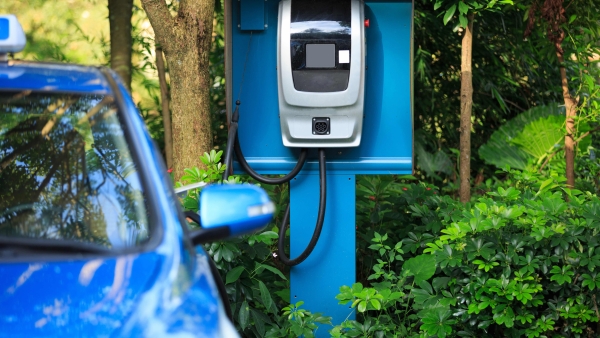The age of the electric vehicle (EV) is upon us. In today’s world, it’s hard to drive far without seeing an EV quietly pass you by. From reduced noise pollution to lower carbon emissions, the adoption of EVs is a partial but critical solution in the fight against climate change.
With greater accessibility to resources, new funding opportunities, and growing consumer demand, now more than ever, the tourism and hospitality industry must embrace its role in advancing EV tourism while benefiting from the impacts.
The Current State of EV Tourism
Road trips remain one of the most popular forms of domestic travel in the U.S. despite the return of global travel in a post-pandemic world. According to our survey of American travelers with Longwoods International, 95% of respondents planned a road trip in 2022 alone.
More recently, the 2023 edition of this research highlighted that 36% of travelers own or lease an EV, while 38% have taken a day or overnight trip in an EV. Research also revealed that more than half (52%) of all Americans are very likely or somewhat likely to make an EV their next car purchase or lease. This strong interest in EVs will need to be met with increased availability and accessibility of charging infrastructure—requiring significant investment at the federal, state and private levels.
EV Policies & Funding
There is a positive outlook for the EV movement. Generous federal policies and funding have been approved for the expansion of charging and alternative fuel infrastructure. Instituted as part of the Infrastructure Investment and Jobs Act and Inflation Reduction Act, passed by the Biden administration in November 2021 and August 2022 respectively, two programs from these acts will provide more than $7.5 billion to build a national EV charging network:
National Electric Vehicle Infrastructure Formula Program
The National Electric Vehicle Infrastructure (NEVI) Formula Program provides all 50 states and Puerto Rico with $5 billion in funding to build a network of EV charging stations. In September 2022, all state NEVI plans were approved.
Charging and Fueling Infrastructure Discretionary Grant Program
Providing a total of $2.5 billion, the Charging and Fueling Infrastructure (CFI) Discretionary Grant Program funding will be available through 2026 in annual tranches. The first round of CFI applications have already been submitted and recipients will be awarded $700 million in funding for fiscal years 2022 and 2023.
With the goal of making EVs equitable and accessible to all, the program has two categories of funding designed to address gaps in the national charging network. Priority will be given to rural, underserved, and lower-income communities.
- Community Grants: Available for projects that will reduce greenhouse gas (GHG) emissions and increase access to alternative fuel infrastructure. These grants are specifically targeted for diverse, rural and remote communities and locations that otherwise may be underserved with EV infrastructure.
- Corridor Grants: Available for projects to support the expansion of public charging and fueling infrastructure along Alternative Fuel Corridors (AFCs).
Barriers to EV Adoption
Despite advances in EV technology, there are still numerous barriers to EV adoption. As noted in our 2023 research with Longwoods International, “difficulty finding charging stations” and “lengthy charging times to fully charge electric vehicle” were the top two barriers to traveling in an EV—resulting in 51% and 48% of answers respectively.











